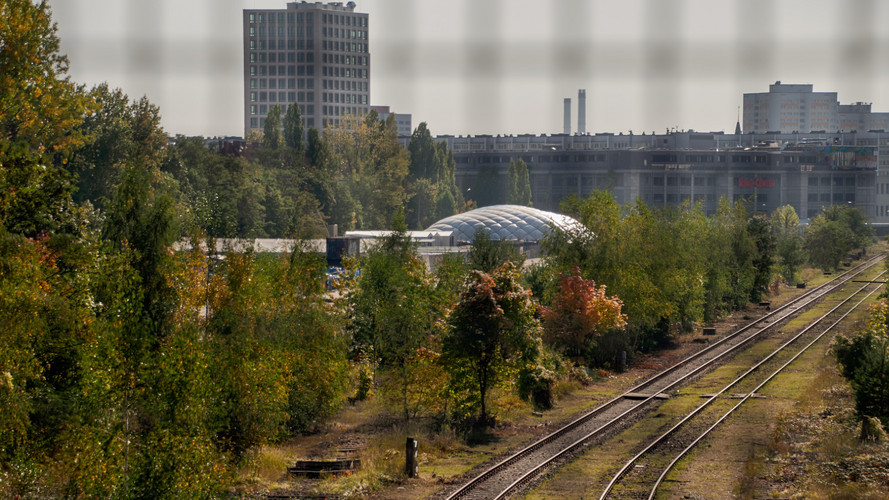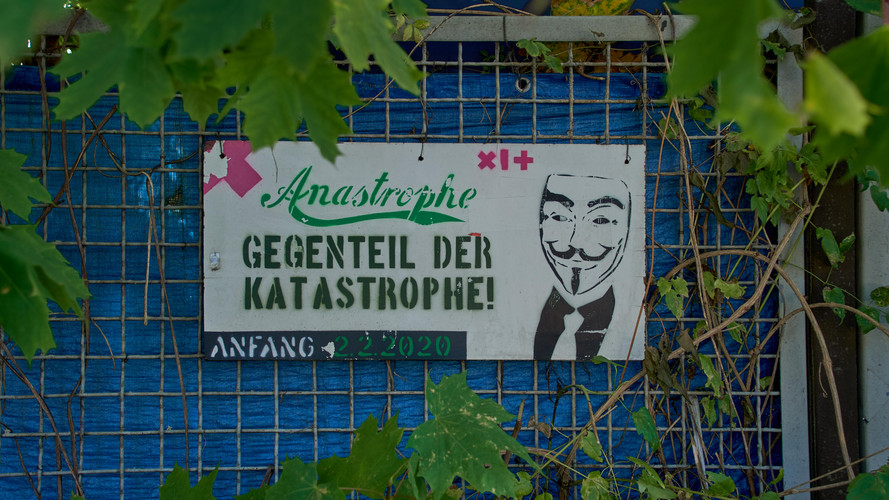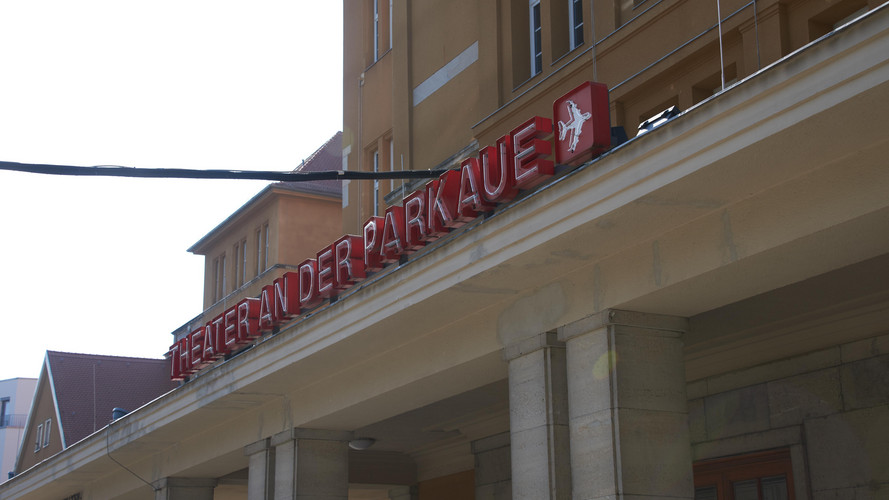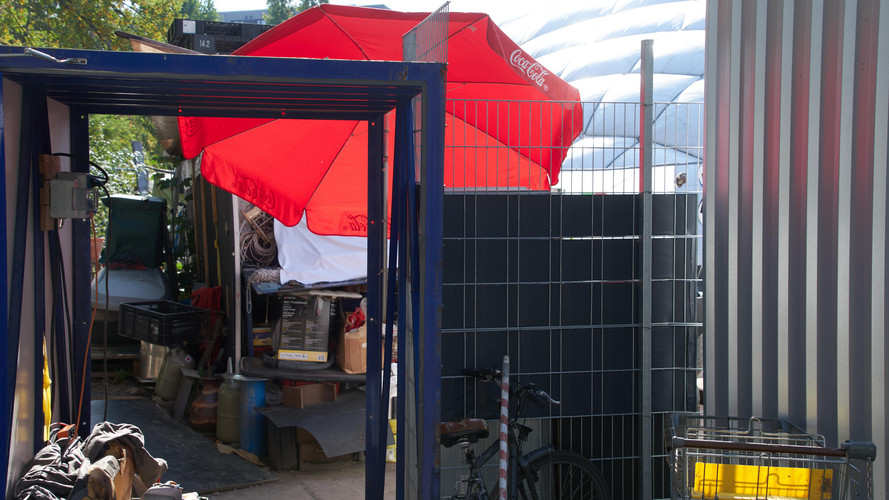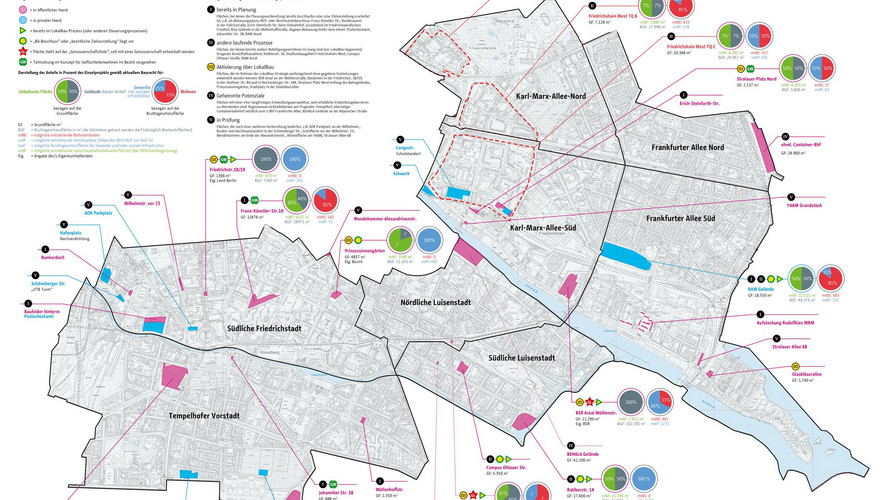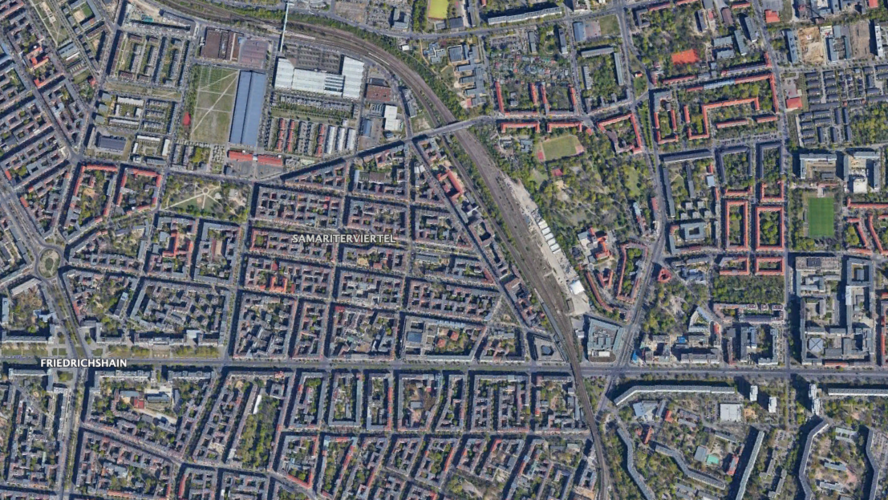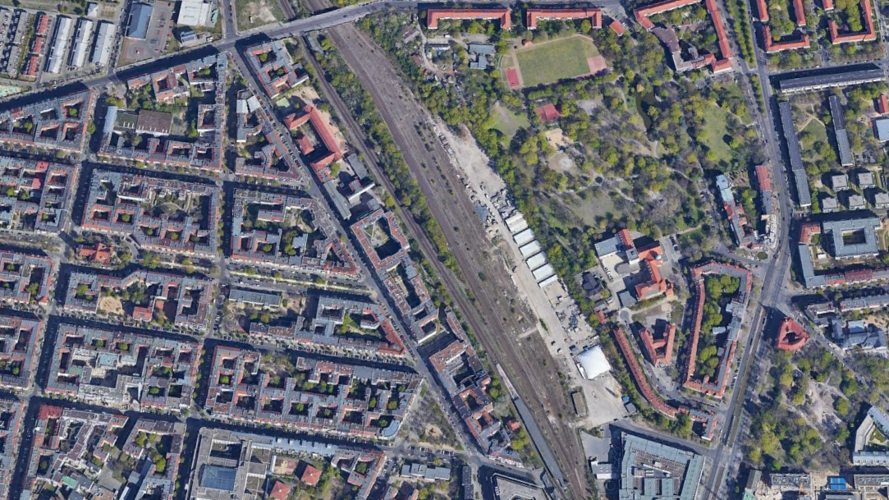studio raumproduktion 22: architectures of inclusion
How can architectures become more inclusive? How can a defined spatial configuration made of long lasting materials offer qualities for diversity, simultaneity and co-existence? How can architecture be more open for many that are not part of the more and more exclusive ways of spatial production? How can we act as spatial practitioners, as architects?
In this project we continue our inverstigation into a site in Friedrichshain in collaboration with lokalbau. develop a deeper understanding of urban transformation processes and how to place ourselves within those as spatial practitioners. We do this by analysing, discussing, intervening, designing, proposing, testing, strategizing, presenting, reflecting.
In this project we continue our inverstigation into a site in Friedrichshain in collaboration with lokalbau. We develop a deeper understanding of urban transformation processes and how to place ourselves within those as spatial practitioners. We do this by analysing, discussing, intervening, designing, proposing, testing, strategizing, presenting, reflecting.
In the summer term we focus on the architectural intervention in a site, its potentials and implications. We do this by engaging in a critical design process, where ideas are projected, discussed and tested along the way, building a common body of reference in response to our question: how can architecture become more inclusive?
We spend time on site(s) engaging with our questions in immediacy. We start again from floating university and become part of it for a time. We connect to its inhabitation as an opener to imagine our project site being transformed as well. We work in the studio as a place where we can best use and share our architectural tools of representation: the drawing and the models. The term ist structured in the working phases:
01 spatial agency,
02 programming,
03 design.
The site for the project is the former Container Terminal in Berlin-Friedrichshain.
The project is understood as a collaborative form between all participants, working on their individual perspectives and questions and at the same time as a group. It is offered as a „Vertieferprojekt“, running over 2 Semesters. Each semester can be attended separately.
Download last semester's brochure: PDF
Participants: max 15
Project times: tuesday 10.30-13h and 15-18h
Studio: 401 / ffloating university
first meeting: tue 26.04.22 – 11.00h in 401
Project selection SoSe 22: Moodle: https://moodle.udk-berlin.de/moodle/course/view.php?id=1536
Note: The seminars urban talks (Talking about collectivities and inclusion in housing) and himmelblick (Impacts of urban practice, case studying "operation himmelblick") fit well with the project in terms of content.
further information:
>> LokalBau
>> LokalBau Strategie
>> LokalBau Karte Potenziale
>> Baustelle Gemeinwohl
